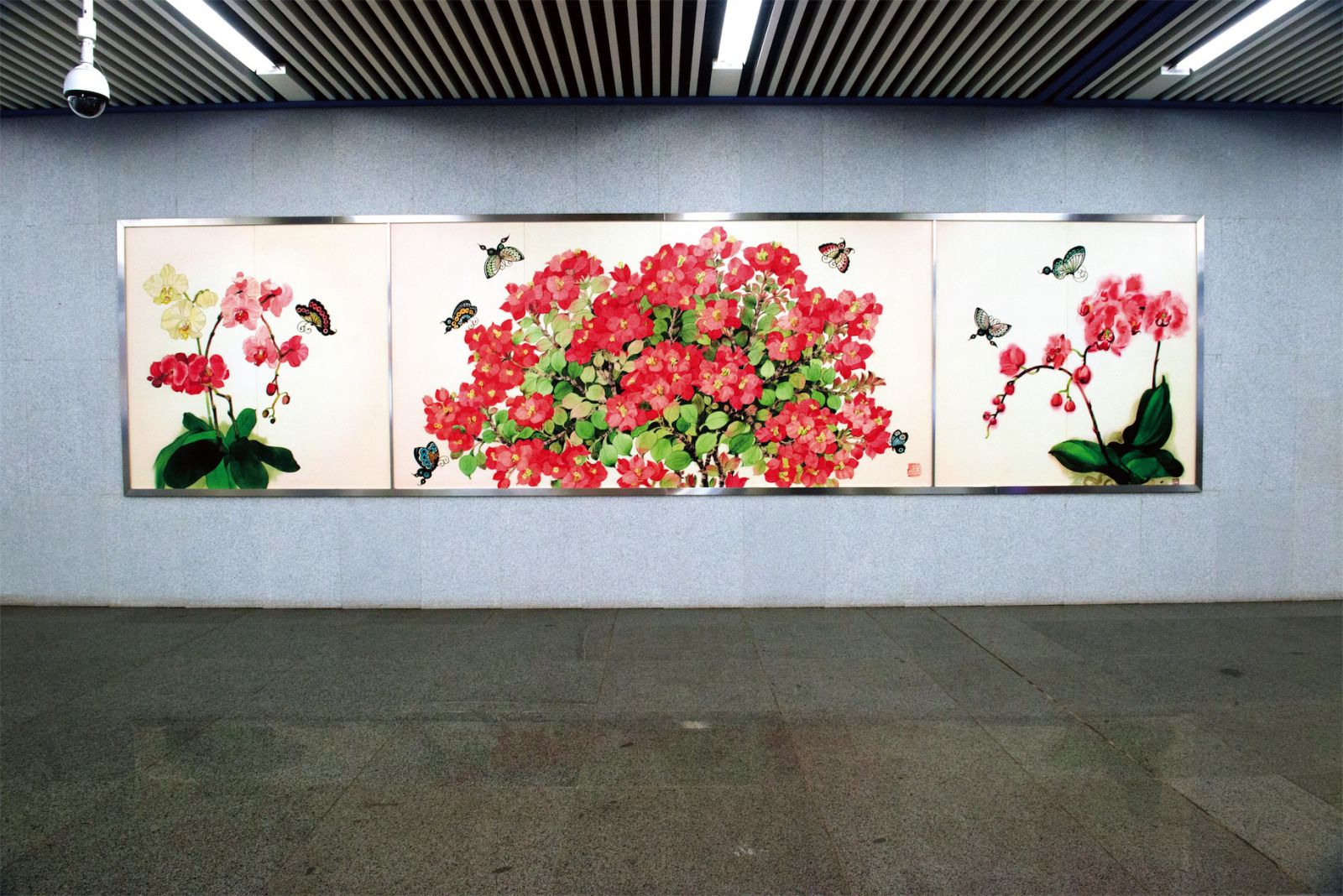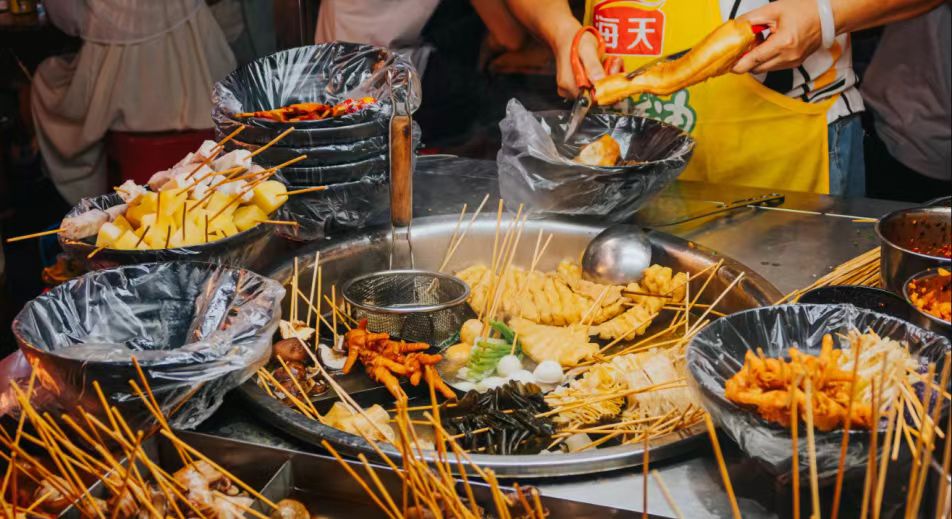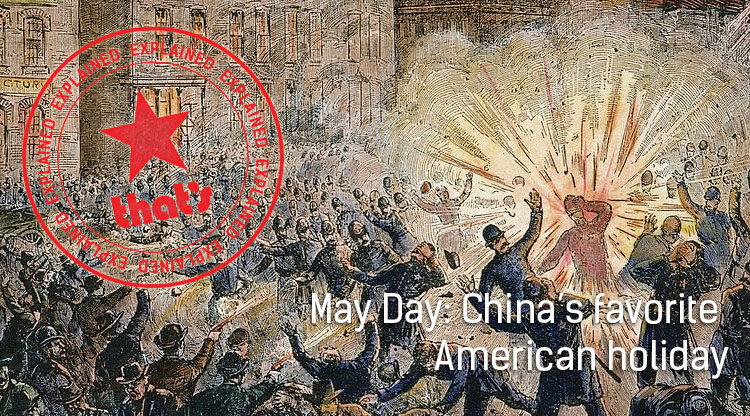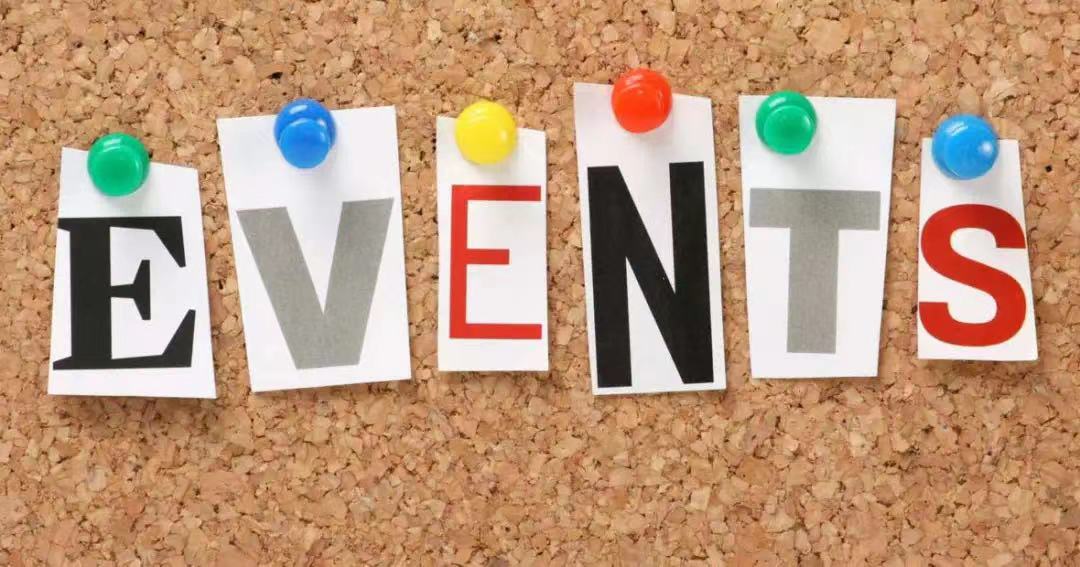So you’ve already been to 798, and Caochangdi seems like too big a journey. But what if you didn’t even have to take a taxi to get your fill of art? What if you never even had to leave the subway station?
It may seem counter-intuitive, but going underground is a great way to catch a glimpse of Beijing culture. As the city’s subway system has grown more ambitious – expanding from just two lines and 41 stations in 2002 to 18 lines and 319 stations in 2015 – so too has its public art.
The first attempt at installing art into the subway system came in 1984, with murals introduced to lines 1 and 2. The tiled frescos span the length of the train platforms and depict scenes from imperial China, the best example of which might be in Chaoyangmen, where the station walls bear images of men transporting grain from the Grand Canal to local Chaoyang granaries.
Things moved on quickly, and by the mid-2000s, with the city confirmed to host the 2008 Summer Olympics, a team from the Chinese Academy of Fine Arts (CAFA) was commissioned to design several new subway line spaces (most notably lines 4, 8, 14, and 15).
Led by the academy’s deputy director Wang Zhong, the new station designs incorporated elements of visual communication, architecture, landscape, digital media and public art.
Wang’s aim was to transform the stations from areas of decoration to interactive areas. The results of the academy’s effort range from triumphant modern art pieces to the more subtle integration of traditional Chinese architectural components. As Wang explains: “Subway art has become an important way to retain memories of Beijing. It has the ability to connect the history of the city to its future.”
Pictured above: Beijing Zoo’s (动物园) fanciful animal murals differ slightly in their make-up (mosaic vs. paint) but all convey a healthy dose of fun and adventure.
Liudaokou (六道口)
.jpg)
The art on line 15 is subtler than other lines, dominated by architectural touches and decorative flourishes. There is more of a focus on ambience and flow than pieces attracting immediate attention. Take the red columns in Cuigezhuang for example, where the top of each column features a seal script – a neat nod to Chinese artists past and present. The room structure of Maquanying is akin to a hollowed-out window, a typical Chinese building style. Anlilu and Liudaokou follow a gold and yellow color theme with a focus on unique lighting that is best appreciated after dark. Late at night, devoid of people, Liudaokou is like a ballroom during suppertime. It’s quiet with little movement apart from the candle flames flickering within chandelier-esque light fixtures suspended from the ceiling.
Nanluoguxiang (南锣鼓巷)

The entire design of NLGX station reflects the area it represents – traditional and familiar – but skillfully adds a modern touch of its own by using over 4,000 amber glass unit cells, which are configured to show an everyday scene in NLGX. Titled Memories of Beijing,it’s not so much the glass units that are spectacular – although they are in their own right – but what’s inside them. Inside each glass block is a treasure provided by people living in Beijing: a commemorative badge, food stamp, thimble, bead or photo. People can scan a QR code next to a treasure, enabling them access to a story and video, or more information about the project.
Dongfeng Beiqiao (东风北桥)


The CAFA creative team invited internationally renowned artists Professor Philip Pan and Professor Shana Chang to create two traditional Chinese paintings for Dongfeng Beiqiao station. The result is a butterfly and floral painting brushed with light pink and dark green against a pristine white backdrop. Beside it, there is an equally striking abstract black and white painting, taking on layered woody shades apparently inspired by Shakespeare’s A Midsummer Night’s Dream.
Wangjing (望京)


Wangjing, or ‘Korea Town’ as it’s also known, plays host to three different art works, each situated opposite the three sets of stairs and escalators that descend into the subway from the main concourse. The theme for the art works is ‘urban leisure life.’ Each piece comprises a number of cubes that combine to create a scene, similar to a pixelated screen of an old video game.
There’s a pig-tailed girl holding balloons atop a suitcase in the clouds (a la the movie Up), a boy in a hot air balloon peering through binoculars, and a Super Mario style platform game, replete with skyhigh mushrooms. The color theme for the station is blue and white, with square inset shapes set along the walls.
Xisi (西四)

Xisi features a tiled wall mural displaying a bevy of characters interacting in a market bazaar, an activity that was common in the area more than 700 years ago.
Olympic Green (奥林匹克公园)

Contrast this with Olympic Green station, which unashamedly wears its Olympic and nationalistic pride on its sleeve – or rather, its walls, ceilings, and everywhere in between. Steel-like silhouettes and an Olympic torch flame cut a powerful image along the subway wall, while Chinese flag imagery features heavily, with red and gold being the standard colors of choice. Created by artists Wu Dingyu and Cui Donghui, the One World, One Dream theme was designed to instill a sense of ‘strength, solidarity and belonging’ among the people of Beijing and China.
Futong (阜通)

One Person, One Drawing by artist Wang Zhong is a collection of over 100 tiled images that have been cut into round or square shapes of monomer. Each image is the work of different individuals, who were encouraged to design an image “from the heart.” It’s effective from afar and even more so up close: a handprint, an open window, a black cloud in a white sky, a village mountain scene and tear-stained eyes.
Line 4 (四号线)


Line 4 is the ‘pulse’ of the city: it runs from north to south, passing through Haidian, Fengtai, Xuanwu and Xicheng districts for a total length of 28.2km. Artists from CAFA designed eight sites on line 4, offering the artwork as a gift for it’s opening in 2009, which coincided with the 60th anniversary of the founding of the PRC.
Perhaps more than any other line, the artwork on line 4 embodies the rich cultural and historical background of Beijing. There are shades of the humanities, science and technology, and people in the different artworks. A mural exhibition show was held at the Beijing National Library Station for one month in 2010 and a long-term exhibition area has since been set up at Beigongmen so more members of the public can discover the stories behind the images.
Above are examples from Xiyuan (西苑) – black stencil murals that are simple in execution but rich in their depiction of mythical Chinese folklore.





















0 User Comments